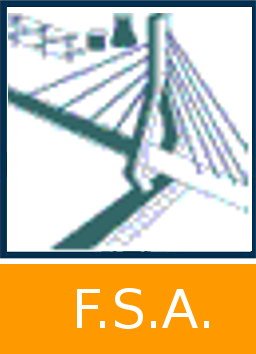Simulation of the domain-wall structure in magnetic thin films with perpendicular anisotropy
Vermeulen, Bob 
Promoteur(s) :
Gommes, Cédric 
Date de soutenance : 24-jui-2021/25-jui-2021 • URL permanente : http://hdl.handle.net/2268.2/11448
Détails
| Titre : | Simulation of the domain-wall structure in magnetic thin films with perpendicular anisotropy |
| Titre traduit : | [fr] Simulation de la structure des parois des domaines magnétiques dans des couches minces à anisotropie perpendiculaire |
| Auteur : | Vermeulen, Bob 
|
| Date de soutenance : | 24-jui-2021/25-jui-2021 |
| Promoteur(s) : | Gommes, Cédric 
|
| Membre(s) du jury : | Vanderheyden, Benoît 
Silhanek, Alejandro 
Brueckel, Thomas |
| Langue : | Anglais |
| Nombre de pages : | 87 |
| Mots-clés : | [en] spintronics [en] perpendicular magnetic anisotropy [en] magnetic domain [en] domain wall [en] hysteresis [en] chirality [en] neutron scattering |
| Discipline(s) : | Ingénierie, informatique & technologie > Science des matériaux & ingénierie Physique, chimie, mathématiques & sciences de la terre > Physique |
| Centre(s) de recherche : | Forschungszentrum Jülich (DE) |
| Public cible : | Chercheurs Professionnels du domaine Etudiants |
| Institution(s) : | Université de Liège, Liège, Belgique |
| Diplôme : | Master en ingénieur civil physicien, à finalité approfondie |
| Faculté : | Mémoires de la Faculté des Sciences appliquées |
Résumé
[en] The emerging field of spintronics offers the prospect of lower power consumption and higher performances for future technologies. Materials with perpendicular magnetic anisotropy (PMA), like FePd, are promising candidates to be used in spintronic devices. This thesis is a study of the domain-wall structure and the reversal mechanisms in FePd thin films, by means of micromagnetic simulations. The handedness (or chirality) of the domain walls is finally investigated. The results are compared with experimental magnetic measurements and neutron scattering measurements.
[fr] Le domaine émergent de la spintronique promet un diminution de la consommation d'énergie et de meilleures performances pour les technologies futures. Les matériaux à anisotropie magnétique perpendiculaire (PMA), comme le FePd, sont des candidats prometteurs pour être utilisés dans les dispositifs spintroniques. Ce travail est une étude de la structure des parois des domaines magnétiques et des mécanismes d'inversion dans des couches minces de FePd, au moyen de simulations micromagnétiques. La chiralité des parois est également étudiée. Les résultats sont comparés à des mesures expérimentales magnétiques et de diffraction de neutrons.
Fichier(s)
Document(s)

 BobVermeulen_MasterThesis.pdf
BobVermeulen_MasterThesis.pdf
Description: Master Thesis
Taille: 12.35 MB
Format: Adobe PDF

 BobVermeulen_Illustrations.pdf
BobVermeulen_Illustrations.pdf
Description: Representative illustrations
Taille: 615.96 kB
Format: Adobe PDF

 Erratum_BobVermeulen_MasterThesis.pdf
Erratum_BobVermeulen_MasterThesis.pdf
Description: -
Taille: 574.8 kB
Format: Adobe PDF

 Erratum_BobVermeulen_Illustrations.pdf
Erratum_BobVermeulen_Illustrations.pdf
Description: -
Taille: 529.81 kB
Format: Adobe PDF
Annexe(s)

 videos_chapter5.zip
videos_chapter5.zip
Description: Animations of the simulations of chapter 5
Taille: 14.19 MB
Format: Unknown

 msans.zip
msans.zip
Description: Python code to compute MSANS cross section
Taille: 85.32 MB
Format: Unknown
Citer ce mémoire
L'Université de Liège ne garantit pas la qualité scientifique de ces travaux d'étudiants ni l'exactitude de l'ensemble des informations qu'ils contiennent.


 Master Thesis Online
Master Thesis Online



 BobVermeulen_Abstract.pdf
BobVermeulen_Abstract.pdf
